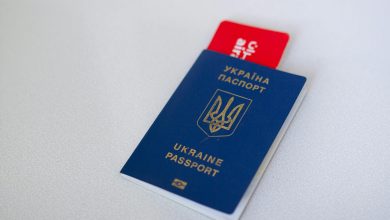Sworn Translation Documents for Use Abroad

Sworn Translation Documents for Use Abroad: What You Need to Know
When dealing with legal or official matters across borders, accurate translation is essential. Whether you’re applying for a visa, submitting business contracts, or presenting educational qualifications, a regular translation might not suffice. In many cases, what you need is a sworn translation.
But what exactly is a sworn translation? Why is it required for international use? Let’s dive into the details of this important process to ensure your documents are accepted abroad.
What is a Sworn Translation?
A sworn translation is an official translation of a document that is certified by a sworn translator—a professional who is authorized by a governing body or court to perform translations of legal significance. These translations are often used for official purposes, such as submitting documents to foreign governments, courts, or other institutions.
Sworn translators typically take an oath to guarantee the accuracy and completeness of the translation. Their signature and stamp on the document indicate that the translation is an exact and truthful representation of the original document.
When Do You Need a Sworn Translation?
Sworn translations are usually required for any official documents that will be used in another country. These could include:
- Legal documents: contracts, court rulings, powers of attorney, birth certificates, marriage certificates, and divorce decrees.
- Immigration documents: visas, residency applications, citizenship applications, or asylum cases.
- Academic records: diplomas, transcripts, and certifications needed for studying or working abroad.
- Business documents: company registration papers, financial statements, and trade agreements.
In many countries, authorities will not accept translations unless they have been officially sworn or certified. For example, if you’re applying for citizenship in a foreign country and your birth certificate is in a different language, you’ll likely need a sworn translation to submit with your application.
How is a Sworn Translation Different from a Certified Translation?
It’s easy to confuse sworn translations with certified translations, but they serve different purposes.
- Certified Translation: This is a translation that comes with a signed statement from the translator or the translation company attesting that the translation is accurate and complete. Certified translations are common in countries like the United States or Canada, where sworn translators are not a legal requirement.
- Sworn Translation: This type of translation is performed by a translator who is officially sworn in and recognized by a government or legal authority. It’s more common in Europe, Latin America, and some parts of Asia.
In simple terms, sworn translations carry legal weight, often making them necessary for formal procedures in foreign jurisdictions.
The Role of the Sworn Translator
Sworn translators are not just language experts; they are also legal professionals to some degree. In countries that require sworn translations, translators undergo a rigorous vetting process to become officially recognized. They might need to pass exams, demonstrate their proficiency in both languages, and prove their understanding of legal terminologies.
Once certified, they receive a unique identification number and a stamp, which they use to certify the documents they translate. This stamp, along with the sworn translator’s signature, assures the authorities that the translation can be trusted.
The Process of Getting a Sworn Translation
Getting a sworn translation follows a specific process:
- Find a qualified sworn translator: Not all translators are sworn translators, so it’s important to ensure you hire someone with the appropriate qualifications. Many countries maintain official registries of sworn translators.
- Submit the original document: You will need to provide the translator with the original document or a certified copy. In most cases, the sworn translation will need to be stamped and signed by the translator to indicate its authenticity.
- Receive the sworn translation: Once the translator completes the work, you will receive a document that includes the translation, the sworn translator’s stamp and signature, and sometimes a certification statement. This is the document you will submit to foreign authorities.
- Legalization or Apostille: In some cases, after obtaining a sworn translation, the document might need to be further authenticated through a process called legalization or by obtaining an apostille. This extra step ensures the document will be recognized in another country, particularly when dealing with international legal agreements.
Sworn Translations and Apostille
The apostille process is a form of document authentication agreed upon by countries that are signatories to the Hague Convention. An apostille confirms that a document is genuine and can be recognized internationally.
For sworn translations, you may need to get an apostille on the original document before it is translated or have the translation itself apostilled afterward. This depends on the requirements of the country where the document will be used.
Common Mistakes to Avoid
When dealing with sworn translations, people often make a few common mistakes. Here’s how you can avoid them:
- Assuming a regular translation is enough: Always check whether the receiving country or institution requires a sworn translation. This is especially true for legal and governmental documents.
- Overlooking local requirements: Different countries have varying rules about what constitutes an acceptable sworn translation. Research what is required in the country where your document will be submitted.
- Ignoring the need for an apostille: Be aware that some countries will not recognize a sworn translation unless it has been legalized with an apostille. Always double-check the process with the relevant authorities.



